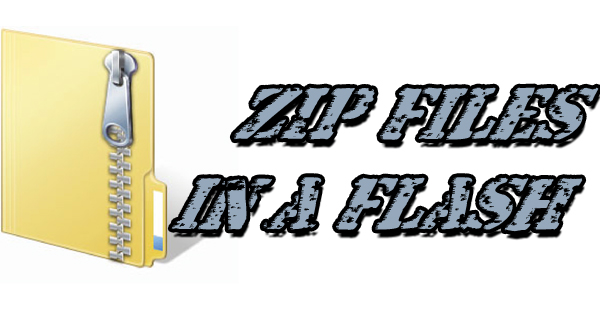
Do you know “zip” about compressed folders? If you do, don’t feel too badly because you’re not alone. We’re all familiar with folders on our computer. From the large folders (Libraries) that house the files of a certain type like pictures and music, to the individual folders that keep the files for your 2017 taxes, without these folders, our computers would be a “Land of Confusion”. I haven’t worked a musical reference into a Blog post in awhile, and that’s Genesis’s first appearance, so it’s time. Anyway, if folders are the end all and be all, why do we need to know about compressed folders? Read on to find out.
ZIP is a type of file format that allows you to compress the size of one or more directories without losing any of the data included in the files. You can tell that a file is a ZIP file by looking at the file extension. These files are denoted by the .zip extension or .ZIP, so the file would look something like this: example.zip. As an example, I created a new compressed (ZIP) folder that contained all of the files that make up one of the websites that I’m currently working on. There’s not a ton of information in the normal, unzipped folder yet, so the folder is only 8.15 MB. My new ZIP folder with all the same files in it stands at 6.99 MB. Are you starting to see why this is important? When I send artwork to the printer for our advertising, they insist on uploading the file as a compressed folder in order to save space on their server. Also, have you ever tried to e-mail an entire folder from your hard drive? If it’s unzipped, you can’t.
If I’ve piqued your interest, I’ll show you how to create your own ZIP file. Click on the folder icon on the computer’s task bar at the bottom of the screen to enter the File Explorer. If that icon isn’t on your computer, search for file explorer. Navigate to a location on your hard drive containing files that you’d like to include in your compressed folder. Right-click in an open area in the window, and click on “New” then “Compressed (zipped) Folder”. Type a name for your zipped folder, and press “Enter”. Now, either drag the files and/or folders you want to into your new zipped folder, or copy from the hard drive and paste into the compressed folder. Add as much or as little as you’d like to, and you’re done. You may then e-mail (as long as the folder isn’t larger than the allowable attachment size from your e-mail service. Gmail’s limit is 25 MB, for instance), or upload the ZIP file to your intended destination.
If you’ve ever received a ZIP file, you’re probably aware that you can’t just open it as you would a normal file. You need a special program to extract the files housed in the ZIP. By default, Windows comes pre-packaged with the WinZip program. After downloading the ZIP file, the file will typically be placed into the “Downloads” folder. Head to File Explorer again, and most likely, you’ll see “Downloads” listed in the top left corner under the “Favorites” heading. If not, double click on the “C:” drive, double click on your username, then double click on “Downloads” and look for the ZIP file you’ve downloaded. There will be an icon showing a folder with a zipper on it. Right-click on this file, and then click “Extract All…” In the window that appears on the screen, click “Extract”, and the same file name will be listed in your “Downloads” folder, but the icon will be changed to the normal folder icon. You may then open the folder, and use the files in any way that you wish. It’s possible that you’ll get a message when trying to unzip the file that your trial version of WinZip has expired. If so, don’t buy it. Instead, head to https://www.7-zip.org/ and download the free program 7-Zip that works almost exactly the same as WinZip.
I hope we’ve been able to “unzip” the often misunderstood ZIP file. The two big takeaways are: 1) ZIP files are compressed files that take up less storage space than an unzipped file without losing any quality, and 2) you’ll need a special program to extract the files to your computer. Remember these things, and you’ll have it licked!
